
For one local chef, lime basil isn’t just a key ingredient in his cooking; it’s also a connection to his past.
Meet the Chef
Lon Bounsanga, SAAP
In our first conversation with Lon Bounsanga and his wife, Ann, about participating in our Chef’s Capsule Collection program, we traded lots of ideas about what we could grow. The couple owns SAAP, a new restaurant located in downtown Cary, just a few miles away from our farm. Frontrunners for crops included galangal (a rhizome similar to ginger) and kabocha squash, but ultimately we landed on basil - lime basil, specifically.
The appropriateness of this choice became clear when discussing the importance of herbs, specifically basil, in his style of cooking.
“Herbs are a big item when it comes to Laotian cuisine. It’s the key component to the dishes; the fresher the herbs, the better the aroma,” he tells us. “It needs to have that scent, every dish that we make has its own different kind of scent.”
Capturing the smells and tastes of a faraway place has been a thread throughout Lon’s culinary career, and before that, throughout his childhood. Born in Laos, his family fled to Thailand as refugees when he was 6, before ultimately moving to Philadelphia two years later. His family settled in a neighborhood with a dozen other Laotian families, finding familiarity within a close-knit community as they navigated a new country.
“I don’t remember much about Laos, but I remember a lot about the food my mother cooked when we were in Philly. I remember her garden in our backyard there - her family in Laos had farmed, and she had a green thumb. Somehow, even with the cold winters in Philly, she was growing makrut lime trees, Thai chiles, Thai eggplant; she even had a papaya tree. And so many herbs - we never had to buy herbs,” he recalls.
Many of the neighbors also had gardens, and he remembers how everyone would share produce. “Everyone grew something different, something from back home.”
At SAAP, which opened in November of 2023, Lon focuses on the flavors of Laos with dishes like pad lao, seafood green curry, and char-grilled ginger pork collar. He can find most of the ingredients he needs to recreate the signature flavors of Laos through his relationships with local distributors. Herbs like dill and cilantro, even sweet Thai basil, are easy to find.
But lime basil remains elusive. “In Laos, lime is the primary citrus, and so lime basil’s flavor, that aroma, is really specific to me. And it’s just really hard to find here. The closest we can get is lemon basil, which I like, but it’s not the same.”
In early June, we bring the first delivery of basil. On the table in the dining room sit four buckets, each overflowing with a different variety of the herb. Lon moves down the line slowly, stopping in front of each bucket, leaning over, and inhaling deeply. After every breath, a smile. “This really brings me back to my childhood,” he says.
There’s only one bucket, about one pound, of lime basil - the original “capsule crop” of our partnership. Of all the basil we planted at the farm, the lime basil was the least productive - from germination to harvest, it dragged behind the rest. But rather than limit our partnership to the smallest yields, we offered up a basil buffet: each week, Lon gets lime basil (as much as we can cut), and then we make up the difference with lemon basil and sweet Thai basil.
What does he make with it? Unlike our first capsule project with Matt Kelly, where the ingredient, agretti, was featured in a single dish, the lime basil (and the other basils we provide) are used in multiple dishes across the menu. “It was too hard to focus on just one dish, we use this basil in the kitchen, and also in some cocktails - it’s a core flavor of our food.” SAAP makes a donation to Haven House Services for every delivery of basil we provide.
The lime basil is a fixture of the steamed salmon - steamed in a banana leaf, with a creamy sauce of coconut milk and panang curry, the citrusy aroma is activated by the heat and permeates the fish. The sweet Thai basil is muddled into a gin cocktail behind the bar, dry and refreshing.
Lon’s use of basil as a foundational building block gave us inspiration to come up with our own uses in the kitchen. From a cucumber salad with lime basil and toasted pistachios, to a cold tomato soup with chiles, fish sauce, and sweet Thai basil, we’ve found ourselves reaching for basil with increasing frequency since starting down this path.
But even better than cooking it ourselves?
Driving five minutes down the road to SAAP to try out what Lon is making.
Photo & Video: Vittles Films
Music: BlueGarden by Blue Dot Sessions
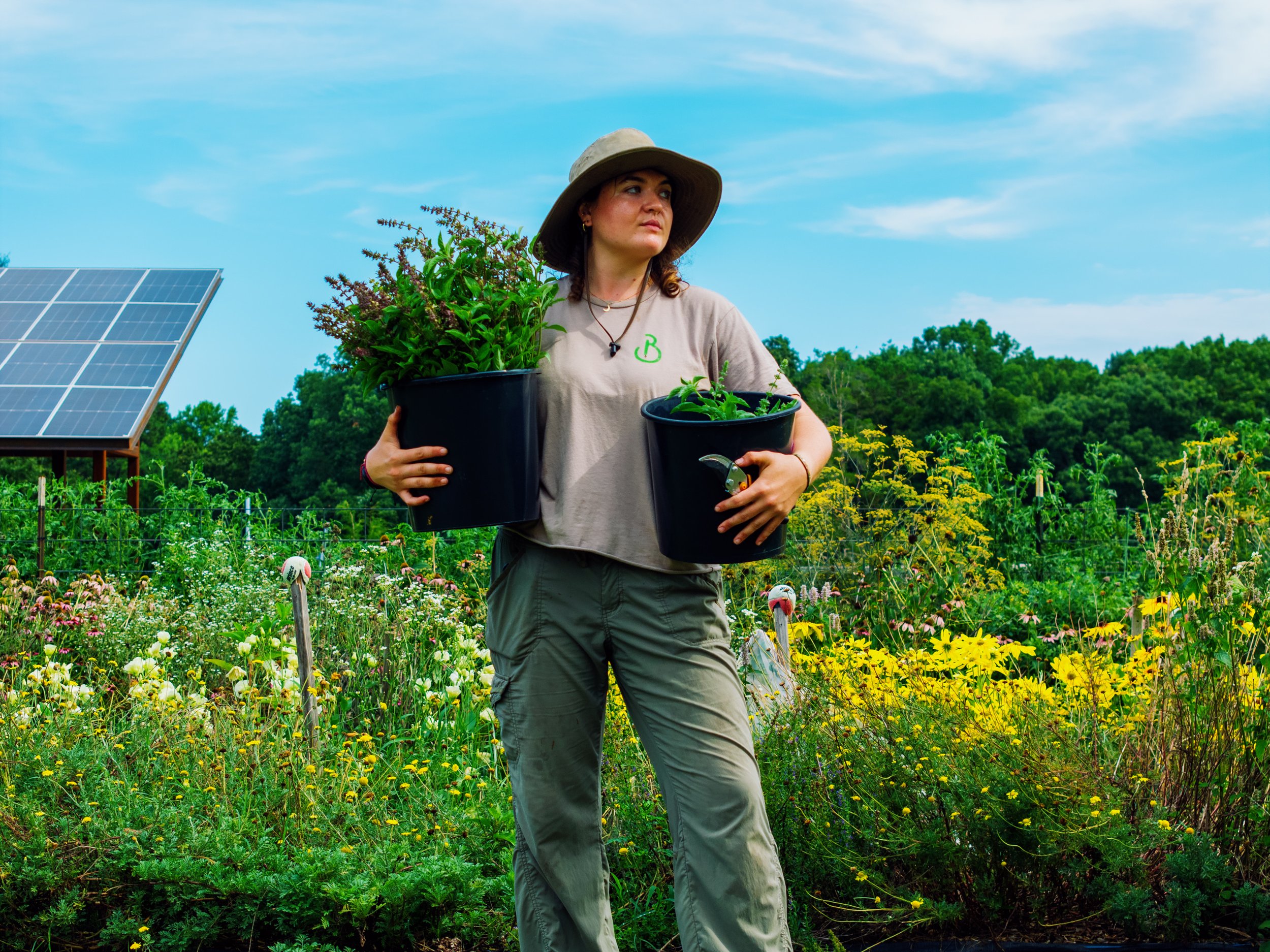

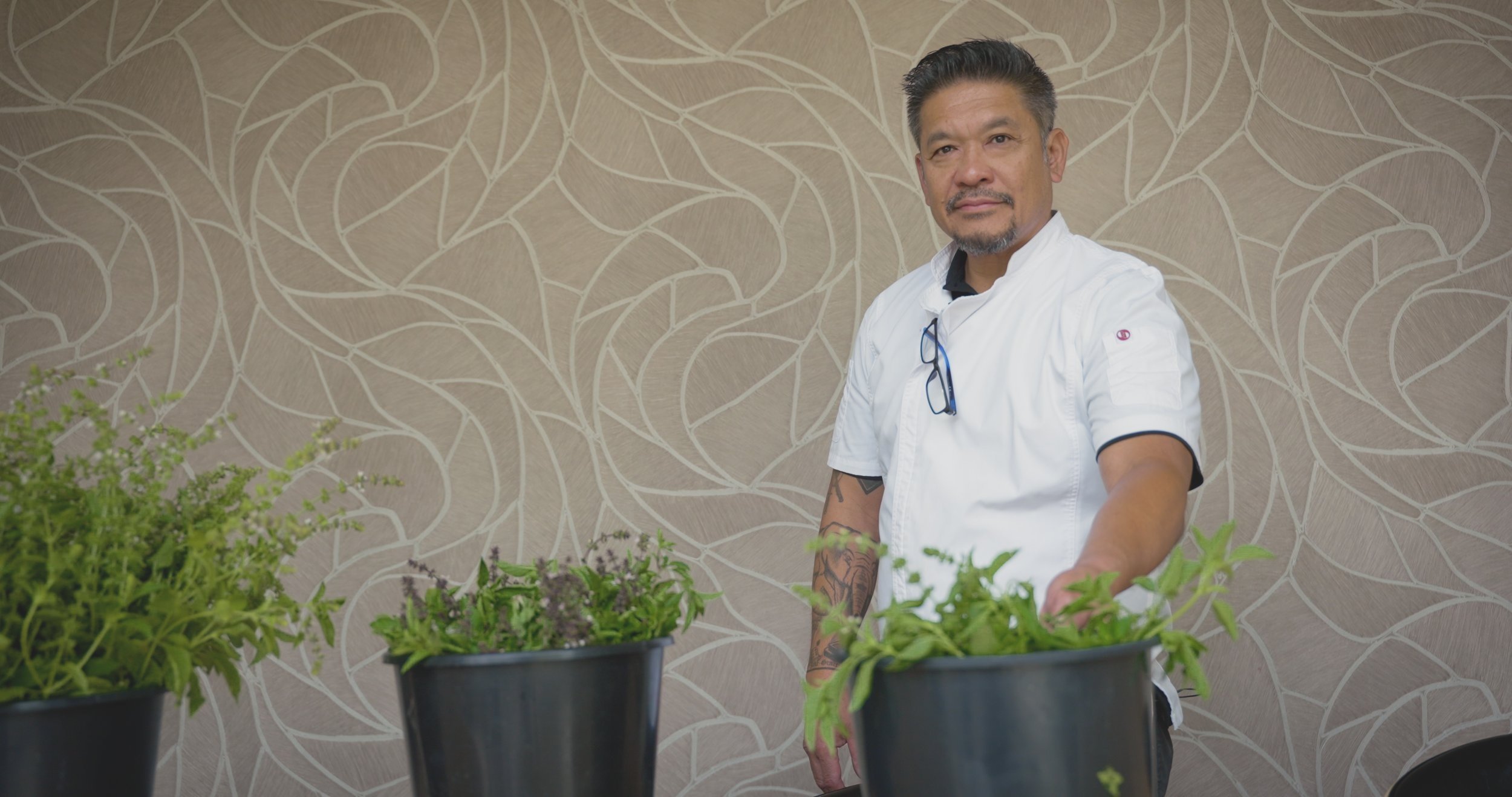
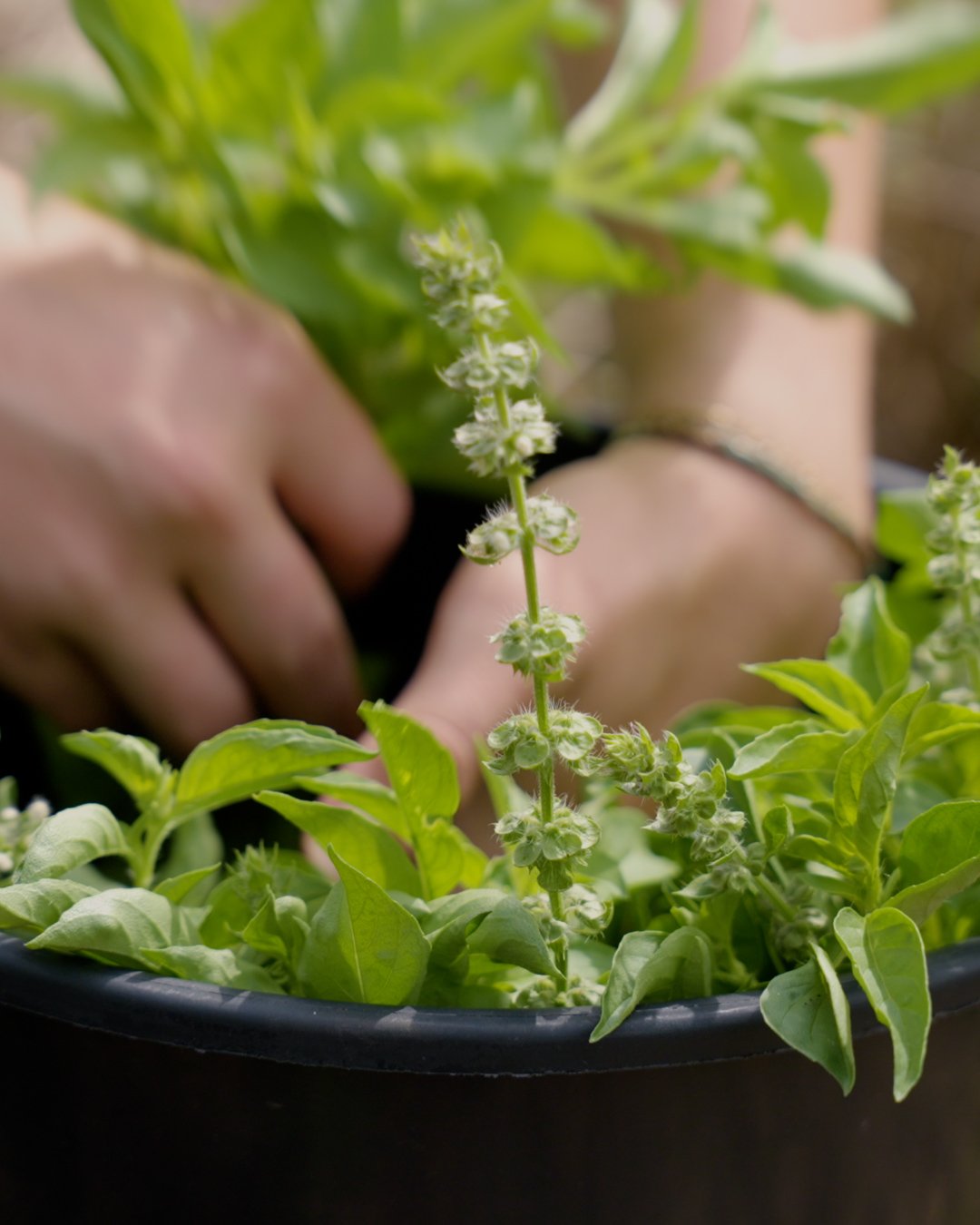
ABOUT LIME BASIL
What is it? Lime basil is a specific varietal within the basil family. The annual shrub is part of the lamicinae family, along with other aromatic herbs like sage, rosemary, thyme, and lavender.
Highly aromatic, basil’s calling card is its intense perfume, the strength of which can dominate a room. In fact, the etymology of ocimum, the Latin name for basil’s genus, is derived from the Greek word ozo, or “to smell.”
It’s also an ancient plant, with records of its use by humans dating back to 3500 BCE. And while the most common type is sweet basil, also known as Italian basil, there are as many as 60 different varietals. We’ve grown Genovese, holy (Tulsi), sweet Thai basil, lemon basil, and Eritrean basil with regularity each year.
Lime basil, the varietal requested by chef Lon, is less common than lemon basil - it has small leaves, grows slowly, and has a distinctly citrusy scent, like the aroma emitted when zesting a lime, combined with notes of camphor, clove, and mint.
How should I eat it? It’s at its most pungent when raw. The leaves can be torn or chopped and added as a flavoring agent to other raw vegetables. It adds a complex depth to marinades. In cooked preparations, try adding it to fish cooked in parchment - the gentle steaming technique allows its aroma to really stand out.
Where can I find it? Sweet Italian basil is widely available at any grocery store. For other varietals, including lime basil or sweet Thai basil, look for a farmer at the farmers’ market that specializes in herbs. Locally, Transplanting Traditions is a non-profit farm that specializes in South Asian ingredients, and sells weekly at the Carrboro Farmers Market; they regularly have multiple basils as part of their offerings.
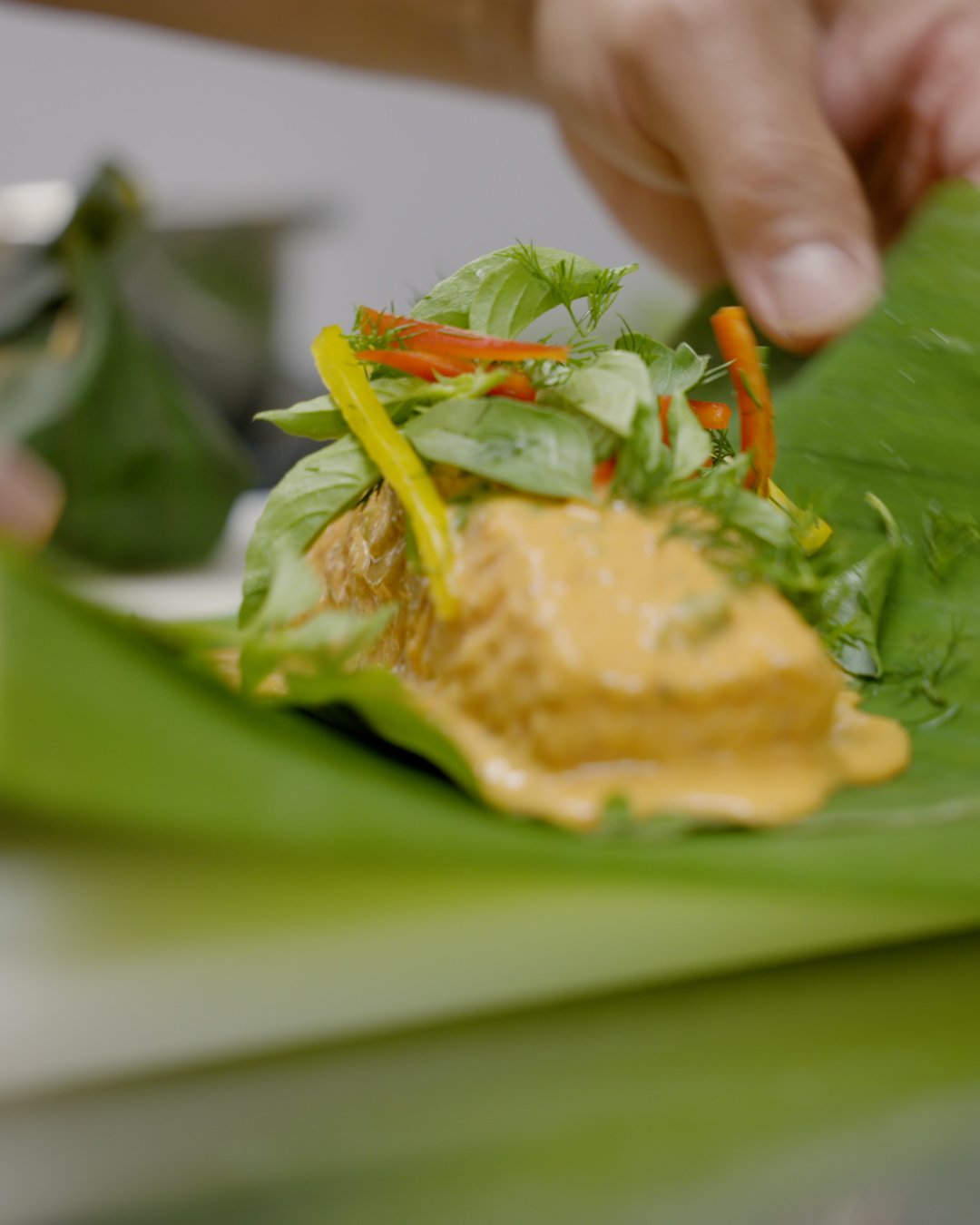
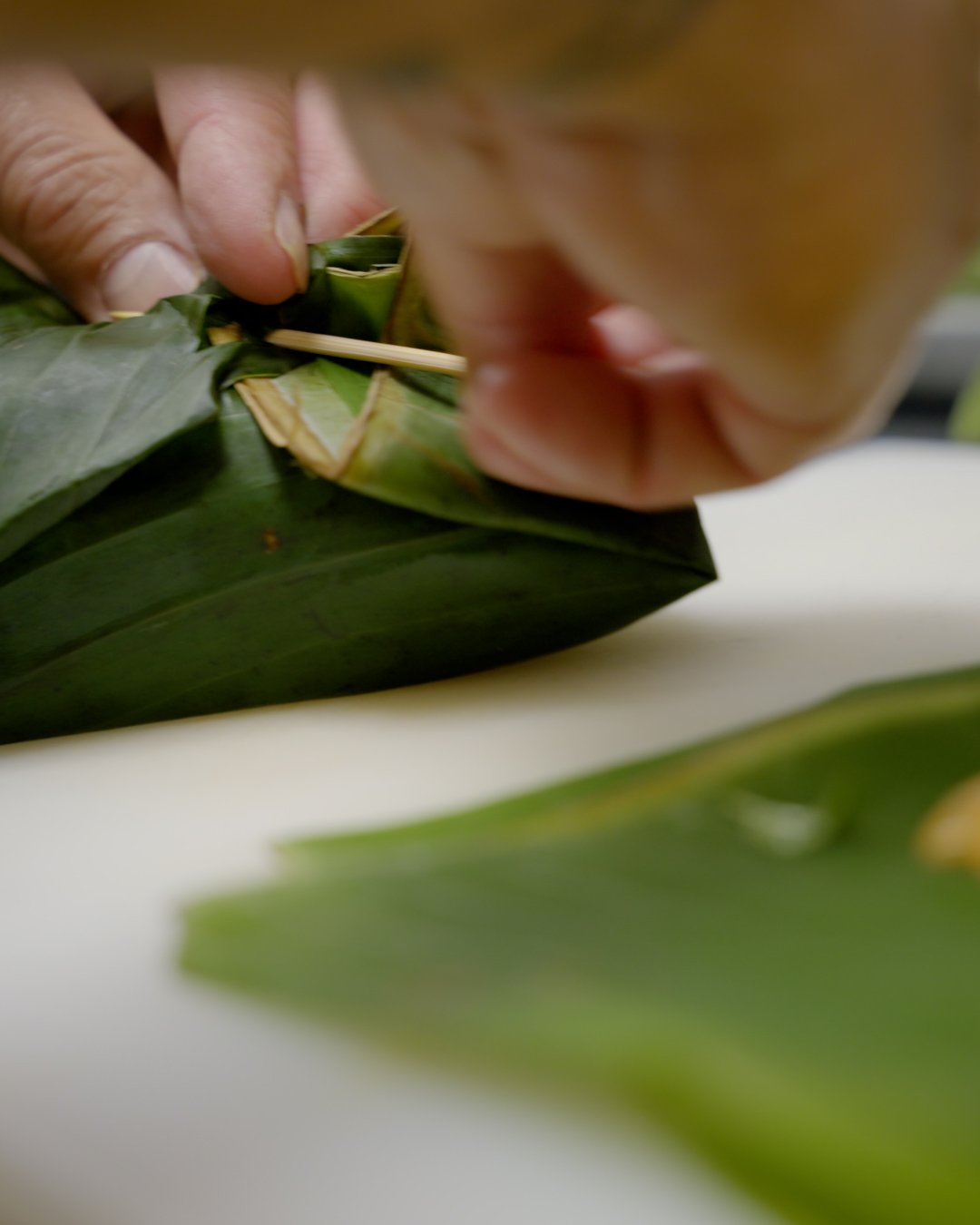
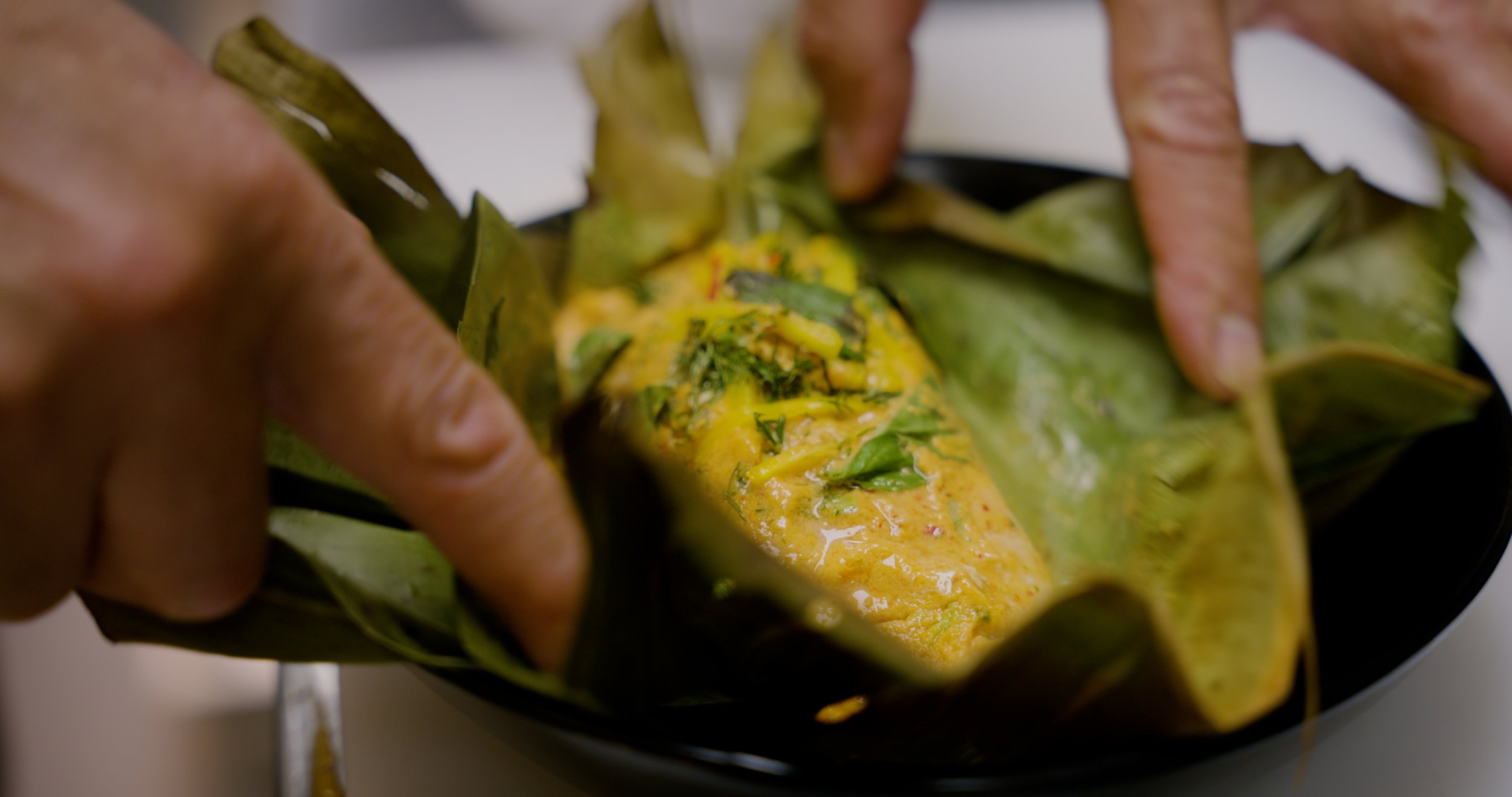
SEEDS, GERMINATION & GROWING HABIT
Due to its rarity, don’t expect to find lime basil seedlings at your local nursery. The best option is to start your own plants from seed.
We have two sourcing recommendations: Southern Exposure Seed Exchange, which offers organic seed, and Baker Creek Heirloom Seed.
Lime basil, especially compared to other types, is a slowpoke. Our germination rate was low - about 50% - and seedling growth lagged behind the other varietals we planted by 7 to 10 days. Typically we start seeds for basil about four weeks before we want to transplant, but for lime basil we’d recommend adding on an extra two weeks, and seeding more than you think you need by about 20%.
Once seedlings have sprouted, avoid top-watering at all costs. The leaves are prone to fungus and mildew if wet, and we’ve lost entire trays of seedlings to water molds in the past. Instead, bottom-water seedlings, by submerging the root end of the plant in about ½ an inch of water, and allow it to absorb from the bottom of the soil block.
We transplanted the lime basil seedlings in mid April, and like all our basil, spaced the plants 12 inches apart. This has proven to be plenty of space for our basil with the commitment to good pruning habits to support airflow.
HARVEST
Timing
We waited about six weeks after transplanting before we started harvesting the lime basil. A good rule of thumb is to wait until the plant has four sets of leaves before you start harvesting. In the case of lime basil, the plants don’t grow as tall as other varietals, so you’ll want to base your harvesting off of leaf sets rather than overall plant size. Once the plants were established, we harvested weekly.
Technique
You can harvest leaves by pinching below the leaves where the stem meets the main branch. You can also look for new sets of leaves starting to emerge from the main stem and pinch just above that.
To harvest full stems of basil, which is how we harvest for Lon, you want to leave a minimum of 6 inches of stem - or three sets of leaves on the plant. You can adjust the length of your cut based on how tall the plant is and how much you need. Longer stems work well for flower arrangements, but when you cut large lengths, keep in mind that it might take longer for the plants to grow back.
Yield
It’s tricky to give precise recommendations here. This year, ten lime basil plants yielded between 1 and 2 pounds a week (to put that into context, the same quantity of lemon or sweet Thai basil plants yielded double that amount). Yields increase with regular harvesting (the more you cut, the more they grow).
Shelf life
Basil is notoriously finicky and delicate post-harvest; it wilts easily and the leaves will turn brown if wet. We get the best results when we harvest stems and store them in a vase with water at room temperature, like you would with a flower bouquet. You can also store picked leaves in the refrigerator, in an airtight container or bag with a dry paper towel - make sure the leaves are completely dry before transferring to the refrigerator.


